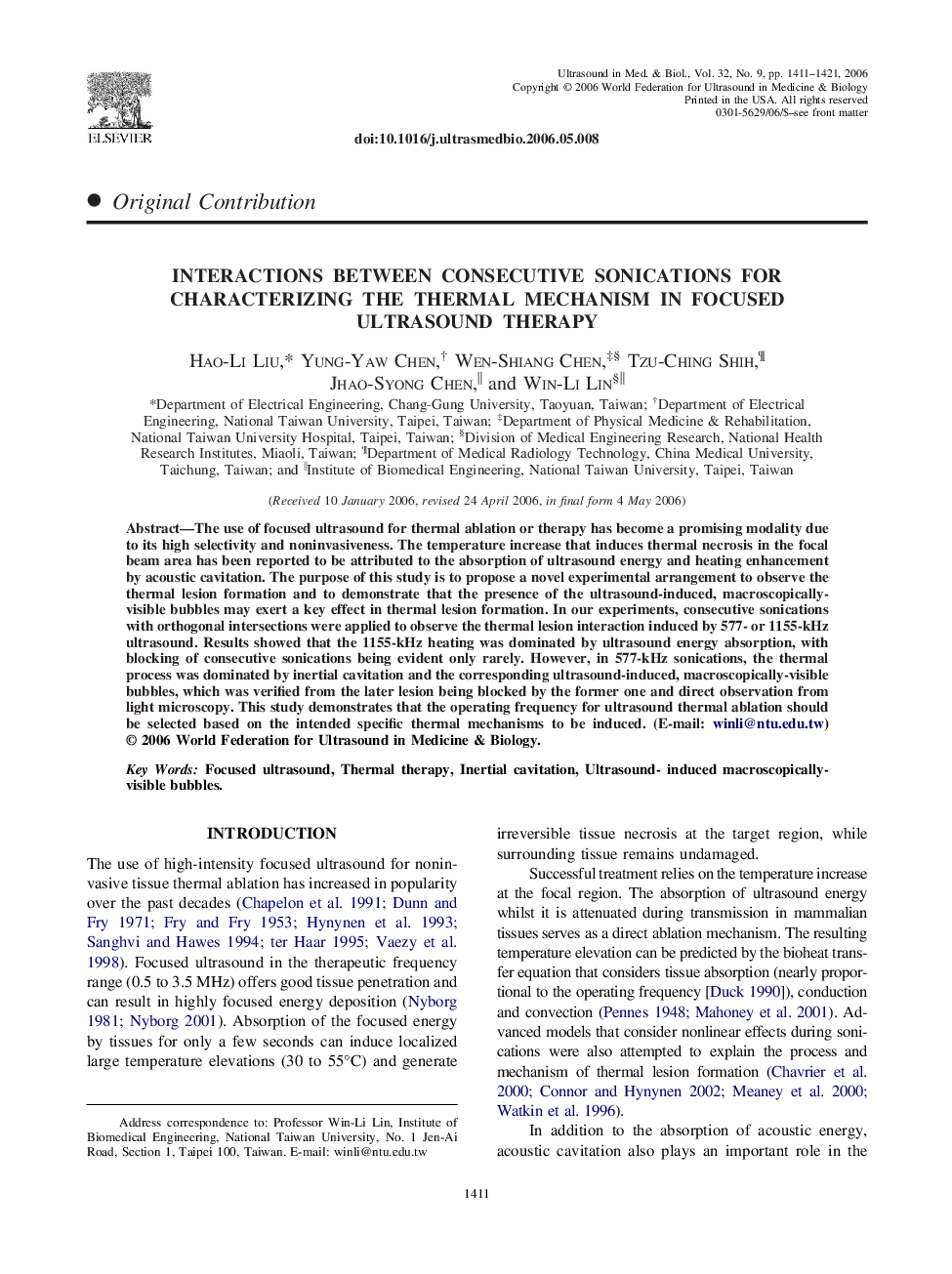| Article ID | Journal | Published Year | Pages | File Type |
|---|---|---|---|---|
| 1762953 | Ultrasound in Medicine & Biology | 2006 | 11 Pages |
Abstract
The use of focused ultrasound for thermal ablation or therapy has become a promising modality due to its high selectivity and noninvasiveness. The temperature increase that induces thermal necrosis in the focal beam area has been reported to be attributed to the absorption of ultrasound energy and heating enhancement by acoustic cavitation. The purpose of this study is to propose a novel experimental arrangement to observe the thermal lesion formation and to demonstrate that the presence of the ultrasound-induced, macroscopically-visible bubbles may exert a key effect in thermal lesion formation. In our experiments, consecutive sonications with orthogonal intersections were applied to observe the thermal lesion interaction induced by 577- or 1155-kHz ultrasound. Results showed that the 1155-kHz heating was dominated by ultrasound energy absorption, with blocking of consecutive sonications being evident only rarely. However, in 577-kHz sonications, the thermal process was dominated by inertial cavitation and the corresponding ultrasound-induced, macroscopically-visible bubbles, which was verified from the later lesion being blocked by the former one and direct observation from light microscopy. This study demonstrates that the operating frequency for ultrasound thermal ablation should be selected based on the intended specific thermal mechanisms to be induced. (E-mail: winli@ntu.edu.tw)
Related Topics
Physical Sciences and Engineering
Physics and Astronomy
Acoustics and Ultrasonics
Authors
Hao-Li Liu, Yung-Yaw Chen, Wen-Shiang Chen, Tzu-Ching Shih, Jhao-Syong Chen, Win-Li Lin,
